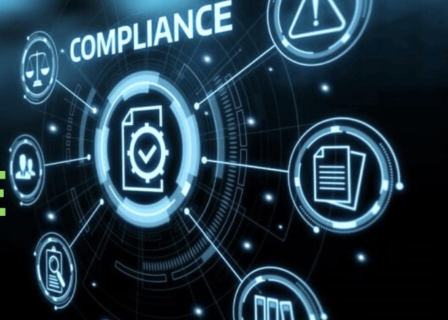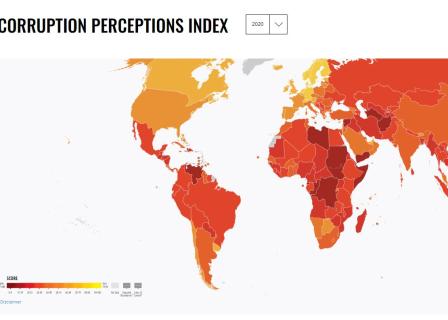Money laundering is the activity of concealing the origin of illegally acquired funds by putting them into legal circulation. Anti-money Laundering, or AML, is any procedure taken to counter money laundering. AML regulations are designed to hinder tax fraud and international smuggling.
Money laundering - what does it consist of?
Money laundering is an activity that seeks to authenticate funds derived from illegal activities. The money is put into public circulation, while at the same time traces of its origin are obliterated. This procedure is always associated with the so-called primary (base) crime, that is, criminal activity of a criminal, economic, against property nature. Its purpose is to achieve financial gain.
Criminal funds are marketed in such a way as not to arouse suspicion of tax authorities or law enforcement agencies. So what does money laundering consist of in practice?
Technological advances have caused criminals to develop a number of sophisticated methods of money laundering, which poses increasing challenges for law enforcement and financial institutions. Just as criminals' ways of hiding the origin of funds are being perfected, institutions set up to uphold regulations are using increasingly better methods of detecting illegal money.
Money laundering - what is it and how does it work?
Criminals are constantly looking for new ways to hide the source of the funds they have acquired. These can include, for example:
- conducting multiple, small transactions - this practice is referred to as smurfing or structuring;
- buying property with cash, for example, through a broker, and then selling it;
- using cryptocurrencies to move large sums of money;
- buying antiques, jewelry, works of art through intermediaries for cash and then selling them;
- making multiple cash transactions in casinos, gambling establishments, and then creating fake business contracts and invoices to suggest the legitimacy of the transactions;
- payments over the Internet, using fintech services (digital payments, mobile payments, international transactions).
Cyberspace seems to offer the greatest room for maneuver, as a complex dynamic environment. Transactions are carried out in an extremely efficient manner by entities that disappear from the economic space very quickly. What's more, criminals are using deception-acquired, confidential information to launder money. This includes, for example, login credentials for private accounts.
 – co to jest pranie pieniędzy.jpg)
Phishing is a popular method of attack based on SMS or e-mail messages. Messages of this type contain a malicious link or attachment - clicking the link will give cybercriminals access to the recipient's personal information.
Money laundering - 3 stages of the procedure
Money laundering is a complex process in which several stages can be distinguished. These are:
- Placement,
- Layering,
- Integration.
Criminal groups use a variety of methods, products, people and entities to bring in purified proceeds from illegal sources. The three phases of the money laundering process can appear separately, together, or they can intermingle, making it much more difficult to detect irregularities. What do each phase look like?
- Placement - involves the physical introduction of funds into the financial and banking system (deposit into an account, execution of a bank transfer, purchase of financial instruments, acquisition of tangible goods). The goal is to convert cash into other material values. At this stage criminals use methods such as structuring, smurfing, refining, blending.
- Layering - involves hiding the source of funds by carrying out multiple consecutive transactions. This process begins, usually when the funds are no longer in cash form, but this is not the norm. The goal is to separate illegal profits from their source, provide anonymity to the owner of the assets, and incorporate illegal funds into legal circulation. At this stage, electronic forms of money transfer, loans secured by bank deposits, purchase of assets, trade in gold and jewelry, international transfers are used.
- Integration - is the process of restoring laundered values to economic circulation so as to maintain the appearance of legitimacy of their origin. This process involves finding a justification (legal and economic) for the possession of these assets. An example of such an action is the conclusion of a buy-sell transaction, as well as the purchase of a bankrupt company or the taking of a bank loan.
AML – what is it?
AML (Anti-money Laundering) are procedures related to the prevention of money laundering and terrorist financing. The necessity of their introduction and the nature of the measures are discussed in the Anti-Money Laundering and Terrorist Financing Act of March 1, 2018, as amended. The law implements the 5th AML Directive and brings Polish law in line with EU regulations.
AML are all activities designed to hinder tax fraud, as well as international smuggling. They also aim to detect unusual behavior of users online and monitor suspicious financial transactions.
These include, for example:
- transfers of large funds,
- repeated inflows to the account,
- increased contact with entities on the watch list.
The AML Law says which institutions should implement AML procedures. These include:
- accounting offices;
- payment institutions;
- banks;
- insurers;
- financial institutions;
- attorneys, legal advisors and notaries public;
- real estate agents;
- dealers in antiques, works of art;
- gambling entrepreneurs; pawnshops;
- cryptocurrency exchange offices;
- art galleries and auction houses.
In order to fulfill your obligations under the law, first of all, you need to make sure that the companies you work with operate in accordance with the law and are not affiliated with suspicious entities. To do this, you need to put in place an internal procedure of the obligated institution, appoint persons responsible for its implementation and supervise the fulfillment of obligations under the law.
Among the duties of an entity that has been deemed obligatory are the continuous monitoring of risks and the application of security measures. One of these is to verify contractors. Another requirement is to report any irregularities.
AML - a difficult task to accomplish
Fulfilling the obligations of the Law is by no means a simple task. It requires the implementation of procedures, the establishment of a team responsible for preventive actions. Another way is to use the support of external entities specializing in AML implementation, verification and evaluation of counterparties, but also monitoring, auditing, record-keeping and even AML training.

Outsourcing such tasks to experts takes the burden of implementing the procedure and keeping an eye on compliance with AML regulations off the shoulders of the institution.
It is also worth remembering that failure to report a suspicious transaction risks criminal liability. Entrusting such duties to an external company gives the entrepreneur the confidence that any irregularity will be spotted in time and the questionable transaction blocked. Outsourcing AML is therefore a very convenient solution for mandatory entities. It provides a guarantee of compliance with regulations, quick reactions in case of irregularities detection, i.e. the financial security of the company.
Money laundering is a ubiquitous practice, posing a huge challenge to all businesses, institutions and law enforcement agencies. The AML system is designed to help detect such activities, prevent them, and thus is supposed to protect the reputation of the company, ensure its operation in compliance with regulations. AML ensures that stability is maintained in the global financial system.






